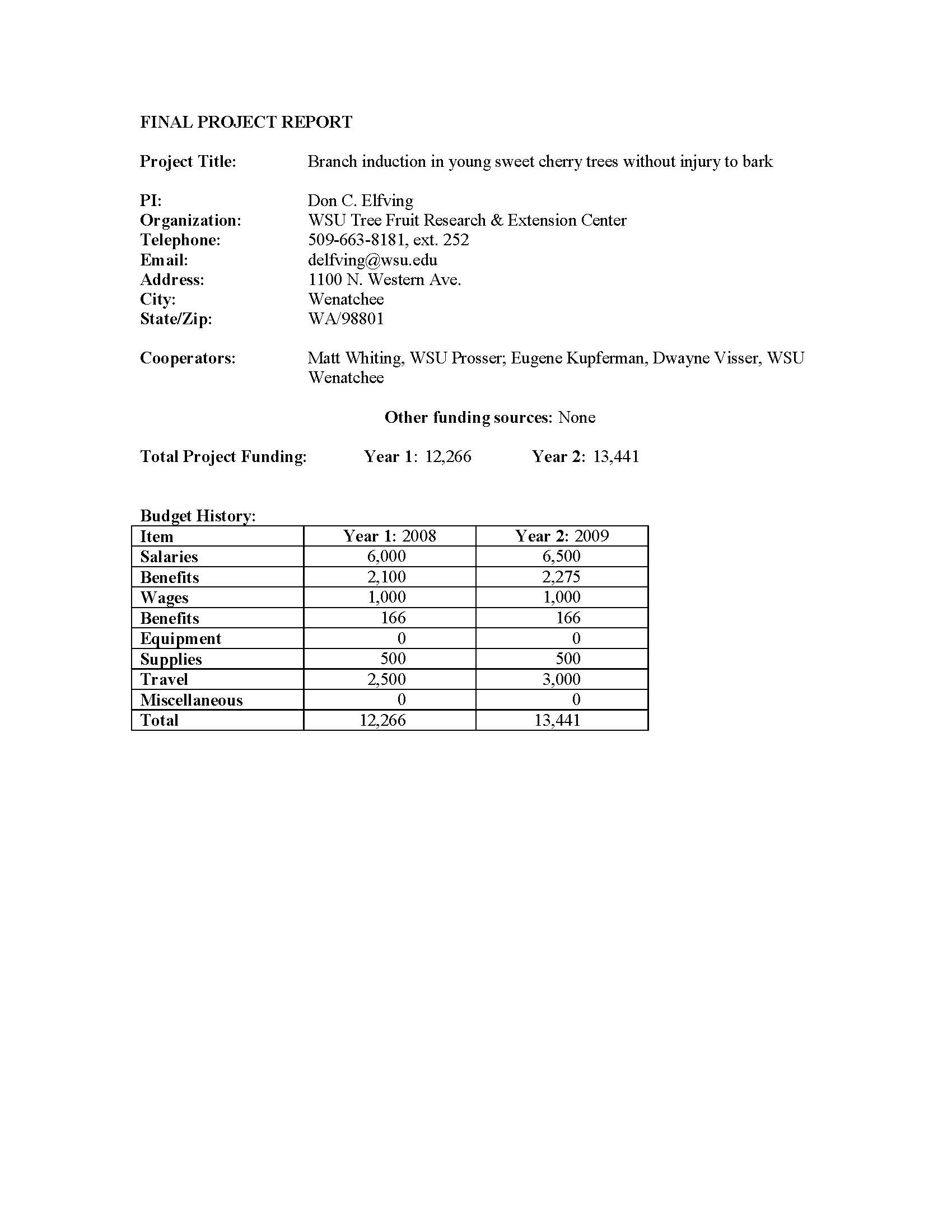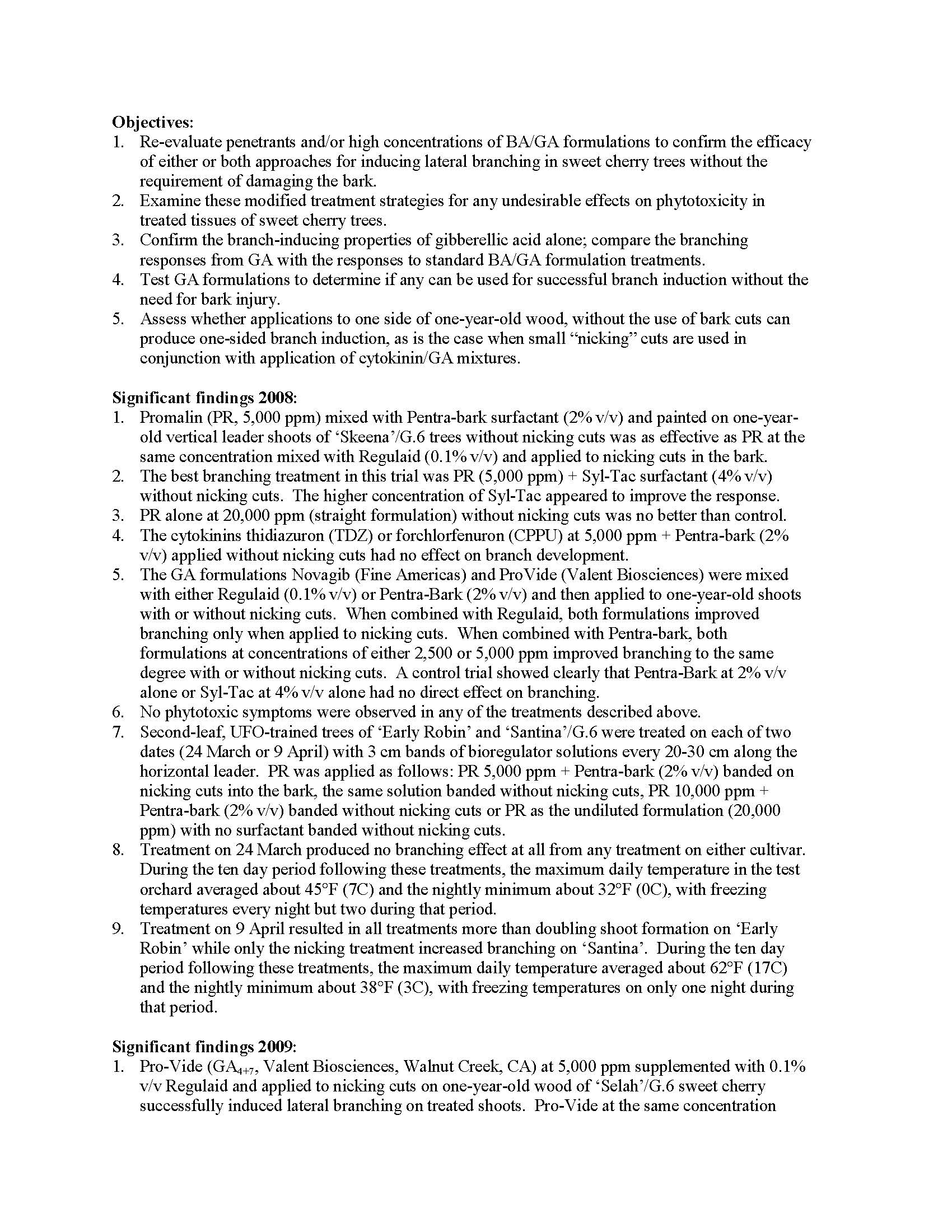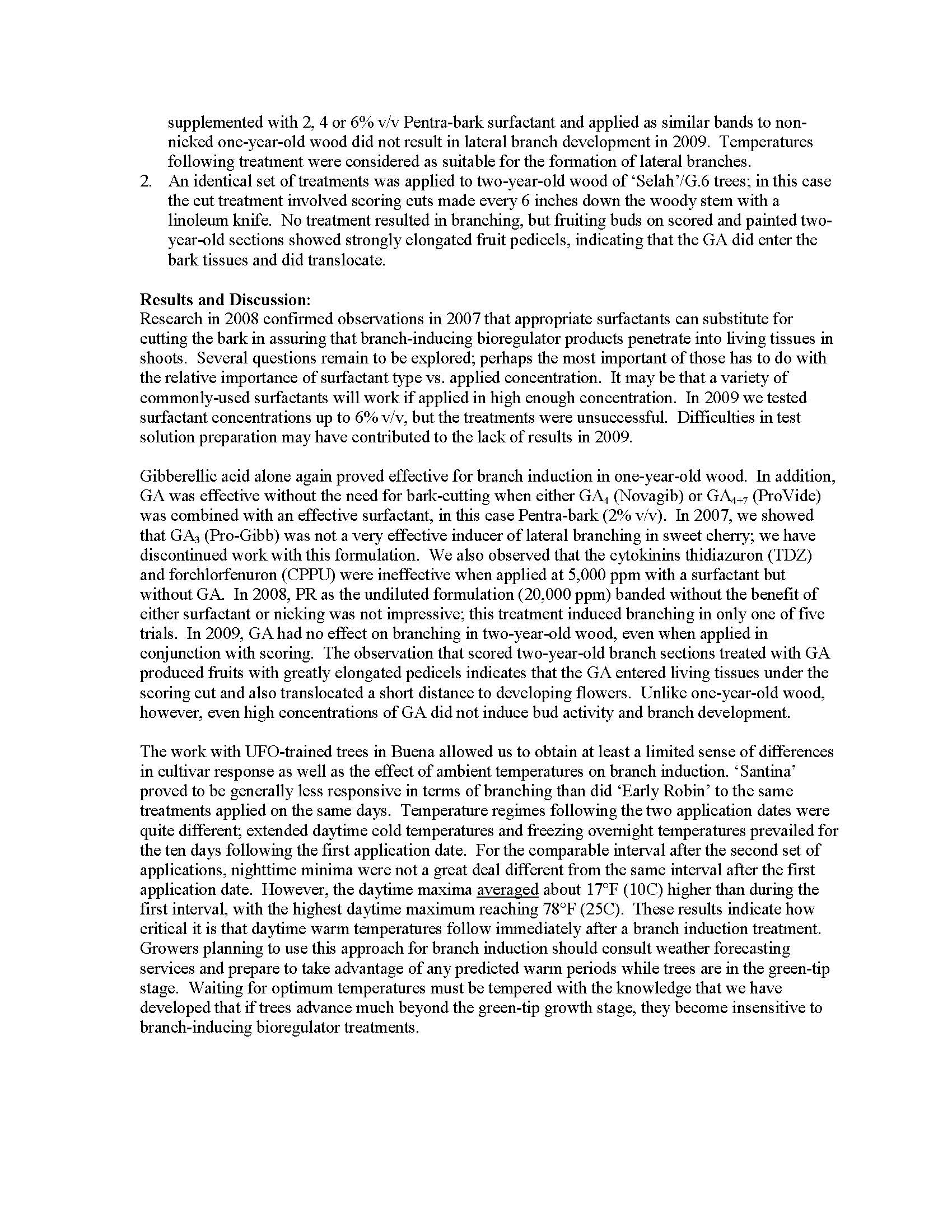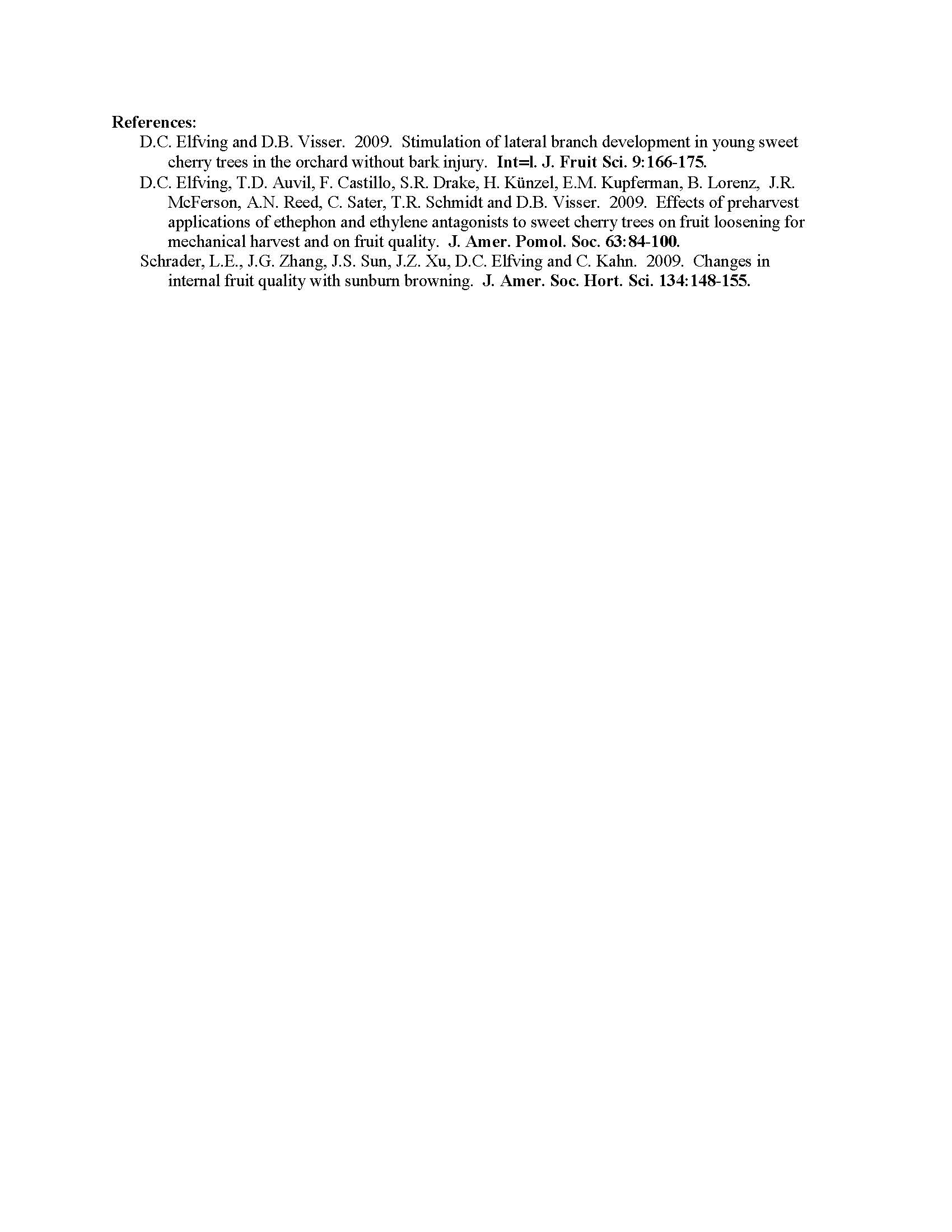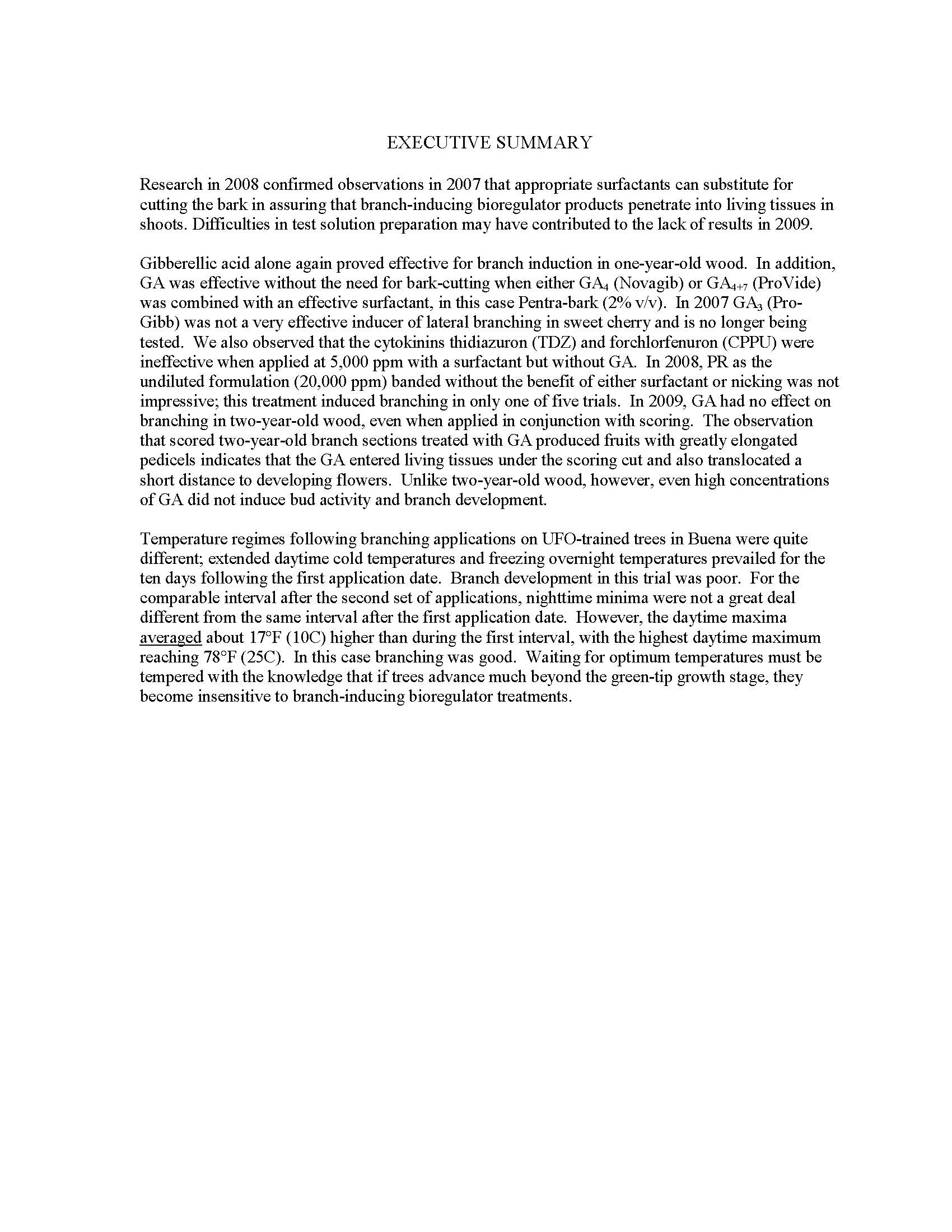Branch induction in young sweet cherry trees without injury to bark
Author: Don C. Elfving
Published: 2008
Summary: The objectives of this project were: 1. Re-evaluate penetrants and/or high concentrations of BA/GA formulations to confirm the efficacy of either or both approaches for inducing lateral branching in sweet cherry trees without the requirement of damaging the bark. 2. Examine these modified treatment strategies for any undesirable effects on phytotoxicity in treated tissues of sweet cherry trees. 3. Confirm the branch-inducing properties of gibberellic acid alone; compare the branching responses from GA with the responses to standard BA/GA formulation treatments. 4. Test GA formulations to determine if any can be used for successful branch induction without the need for bark injury. 5. Assess whether applications to one side of one-year-old wood, without the use of bark cuts can produce one-sided branch induction, as is the case when small “nicking” cuts are used in conjunction with application of cytokinin/GA mixtures.
Keywords:

